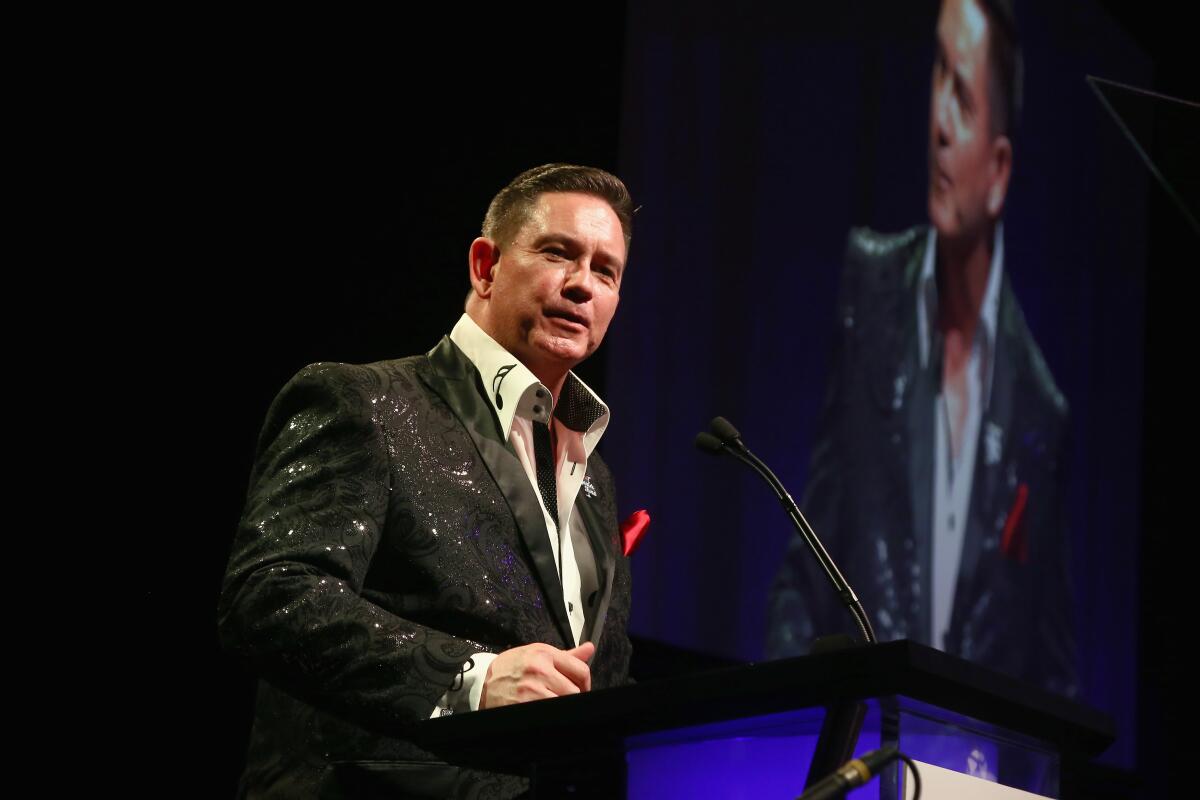‘The worst thing that happens in the system is a child dying’ Talking with L.A.’s DCFS director

- Share via
A spate of child fatalities in the Antelope Valley — Gabriel Fernandez, Anthony Avalos and Noah Cuatro, among others — has led to calls in recent years for more resources in the underserved region.
Los Angeles County Department of Children and Family Services Director Bobby Cagle and Public Affairs Manager Shiara Dávila-Morales sat down this spring with reporters from the Los Angeles Times and the Investigative Reporting Program at UC Berkeley to talk about how the agency can better support children in the region and what changes were made in response to the 2019 death of Noah Cuatro, a 4-year-old Palmdale boy.
This interview has been edited for length and clarity. All responses from Cagle unless otherwise noted.
Noah Cuatro’s life and tragic death offer a sobering window into how race, cultural sensitivity and trust collided inside the agency.
Mr. Cagle, we’re wondering why you decided that Noah’s case didn’t create the need for any employee discipline?
Employee discipline is something that I do not discuss, and I can tell you this, however. … I take a look at every situation where a child’s death certainly is involved, and in other circumstances, where we have significant issues that don’t progress to this level, but do require us to look at the performance of the employees, to look at their conduct in the cases that they have. And if necessary, we do a range of things, from additional education for employees, all the way up to dismissal, in the event that that is warranted. So I assure you that the conduct of the employees in this case, we’re being very thorough, internally, and through the process with the Office of Child Protection, and the actions that we felt necessary were taken.
There is, of course, a focus on eliminating the role of caseworker bias in child welfare, but once bias was alleged, your staff didn’t appear to know what to do about it. The allegation paralyzed front-line staff and regional administrators, and led to deadly delays. Why have you been unable to implement a clear process to resolve allegations and bias when Noah was alive? And how would you expect the allegation to be handled today when one caseworker accuses another of bias?
So that’s something that really requires a supervisory and managerial response, to analyze the specifics behind the situation. There have been existing processes that handle this, whereby we bring the team together to look at the allegations, whatever the circumstance is, to determine if there is a reason, for instance, removing a caseworker from a case, or whether there is a need for a different type of engagement with the family. And those circumstances really need to be dealt with as a team. And so the processes that we have followed historically and still follow involve a team looking at this with final decision-making authority.
Would you say that that process worked in Noah’s case?
In this circumstance, without pointing to the detail on the case, there was a high-level meeting of staff, supervisors and managers. The focus of that was really on assuring that we were taking the correct actions. I think my staff actually carried that process out well. … It’s very difficult for, I think, the public especially to understand why those decisions were made, but I’m confident that the decisions that were made were the right ones. And I think that’s supported by the Office of Child Protection report that went very much into detail on that.
But just to be clear, you said that that process worked well. But what the record shows and what I think we plan on reporting is that Susan Johnson was removed on the basis that a Spanish-speaking social worker was needed for this family, despite the fact that all members of the family were English-speaking. So people are going to see that and say, “What? That doesn’t sound like a system that works. That doesn’t make sense.”
This is really getting more into the case specifics than we are prepared to go today. And so I can tell you in general, however, that it is very important that we have the cultural competency in working with families, and if there are extended family members that only speak another language, for instance, we need to have someone who is capable of communicating in a way that they are able to collect the best information possible. And so that’s a concern in all cases that we work in, and it’s not just limited to the consideration of the mother and father and the language they speak, but it can be extended to family members as well
For over a decade, government watchdogs have reviewed L.A. County fatality cases and said that the agency needs to end with what the Children’s Special Investigations Unit called a “keep the numbers down, don’t detain” mantra. In Noah’s case, we again have a decision not to detain being made in a knee-jerk fashion by people who acknowledged a thin understanding of his case. Why have you and the department been unable to end this pattern?
I would say that the data would not support your assertion. The department takes in every child that is in danger that we come into contact with. But we have to also understand, and the public should understand and I hope you will report on, the fact that we do have a set of laws and constitutional responsibilities to meet as well. If we do not have the proof that is needed to be sustained in a court of law, our responsibility is to go back and dig deeper. In circumstances where we have the evidence to be able to prove the case in the courts, we move forward with that and take custody if we can assure that the child’s safety is reasonably assured going forward.
So what we try to do is to take the circumstances, develop the best information that we can develop through our investigative process, and then work with our attorneys to develop the case that will allow us to proceed in a court of law so that what we take in there is actually viable. And I think that is a very, very important part of the work that we have to do as well. This is a very high bar legally for us to meet, because we have to be able to prove with a preponderance of evidence that the allegations that we make in our petitions are in fact the case.
The policy of the department is to notify the court within 10 days when a removal order is not carried out.
The judge was notified on June 26.
When caseworkers testified about their actions in Noah’s case, they said they had been guided by the department’s Core Practice Model, a policy that emphasizes the family strengths and a less adversarial approach to working with parents. What does it mean for the Core Practice Model if Noah’s case is a real-life example?
So without regard to Noah’s case, I can tell you that the Core Practice Model is a very broad piece of guidance for our staff, it weighs the context and the expectations for how they do their work. One part of the Core Practice Model is on engagement, and one of the keys to doing good social work with children and families, is being able to engage them, making sure that we develop a relationship that is most likely to draw out the best information that we can get on that family. So the Core Practice Model gives guidance on that, and we train staff on how to do that. It also gives guidance on how to assess core safety and risk.
What role did Noah’s case play in the decision to create the new predictive analytics tool that uses machine learning and algorithms to assess a child’s risk?
This tool actually was something that I came up with, or at least the concept. … I think you know well that there were concerns over the potential for increasing [racial] disproportionality in our system. And so when I was looking at this, I was wondering if there was an opportunity for us to take the work that [social welfare professor Emily Putnam-Hornstein] had done and use it in a way that would not worsen the disproportionality. And because we’ve had a number of cases in that Antelope Valley area, in particular, and you can cite them better than I can. ....
We can take [the new] tool and do what we are calling risk in stratification, meaning that we would automatically run cases through that that had already been screened into the system, so the predictive analytics has no role in determining which cases are accepted for investigation and which ones are not, but to take the information that we have in our system and across systems, to be able to say, “This is a case that you may need to look at more closely because it has factors in it that are high risk.” …..
The death of any child are things that haunt me, frankly. I’ve done this for a long time, and the worst thing that happens in the system is a child dying. My hope is that we’ll be able to use this in a way that will help us better inform our system and to layer on additional expertise that will help our caseworkers ferret through a myriad of very complex things that’s involved in a case, and make it extremely difficult to get to an ultimate conclusion. And so that’s my hope, and it is a result, in fact, of a lot of thinking that I’ve been doing since I arrived here. And it actually started with my reading of the Gabriel Fernandez case after I arrived here, wondering, “What, if anything, could we do to strengthen response in a way that would help us avoid this terrible outcome?”
More to Read
Sign up for Essential California
The most important California stories and recommendations in your inbox every morning.
You may occasionally receive promotional content from the Los Angeles Times.















